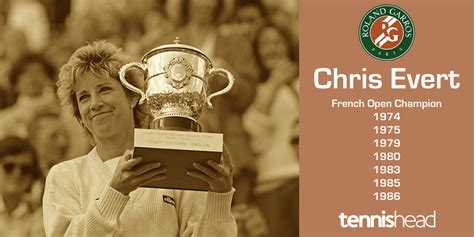
Chris Evert’s suggestion to hold best-of-three-set matches until the French Open semifinals has ignited a firestorm of debate within the tennis world, sparking both support and vehement opposition to the potential format change at Roland Garros.
Chris Evert’s proposal to alter the format of the French Open, specifically suggesting that women’s matches remain best-of-three sets until the semifinals, has triggered significant controversy and divided opinions across the tennis community. The idea, stemming from Evert’s concern over the physical toll of best-of-five-set matches on female players, has been met with both support and staunch opposition, leading to a heated debate about the future of the tournament’s structure. This proposal raises fundamental questions about equality, tradition, and the unique challenges faced by athletes competing at the highest levels of professional tennis.
Evert, an 18-time Grand Slam champion and now an analyst for ESPN, voiced her opinion on social media, stating, “French Open women: best of 3 until semis. What do you think?” This simple question unleashed a wave of responses, highlighting the complexities and sensitivities surrounding the issue. Her argument centers on the belief that the current format, which mirrors the men’s best-of-five-set structure in the later rounds, may not be in the best interest of the female players’ health and longevity.
The core of the controversy lies in the perceived inequality inherent in Evert’s proposal. Critics argue that suggesting a different format for women’s matches undermines the principle of equal opportunity and diminishes the prestige of the women’s game. They contend that female athletes are just as capable of handling the physical demands of best-of-five sets and should not be subjected to a different standard. Furthermore, some argue that such a change would reinforce outdated stereotypes about women’s physical capabilities.
However, supporters of Evert’s idea emphasize the unique physiological differences between men and women and the potential benefits of a more tailored format. They argue that reducing the physical strain on female players, especially in the earlier rounds, could lead to fewer injuries and a more sustainable career path. This perspective acknowledges the rigorous demands of professional tennis and seeks to prioritize the long-term health and well-being of the athletes.
The debate also touches on the historical context of the French Open and its commitment to tradition. Roland Garros is known for its grueling conditions and the endurance required to compete on clay courts. Altering the format, even for a specific gender, could be seen as a departure from the tournament’s identity and a concession to modern pressures.
Ultimately, the decision to change the format of the French Open rests with the tournament organizers and governing bodies of professional tennis. They must weigh the various arguments and consider the potential impact on the players, the fans, and the overall integrity of the sport. The debate sparked by Chris Evert’s suggestion underscores the ongoing challenges of balancing tradition, equality, and the well-being of athletes in the ever-evolving world of professional tennis.
The current format of the French Open sees both men and women playing best-of-three sets in the early rounds. However, in the men’s competition, the format switches to best-of-five sets starting from the first round, demanding greater physical endurance and strategic depth. The women’s matches, on the other hand, maintain the best-of-three format throughout the tournament. This difference in format has been a topic of discussion for years, with arguments presented for and against equalizing the format for both genders.
Evert’s proposition brings this longstanding debate to the forefront, prompting a re-evaluation of the rationale behind the current structure. Her concern is rooted in the belief that the physical demands of best-of-five sets, particularly on the slow clay courts of Roland Garros, can be excessively taxing on female players. The longer matches can lead to increased fatigue, higher risk of injuries, and potentially shorter careers.
“I just think, you know, best of three until the semis,” Evert articulated, encapsulating the essence of her argument. This specific delineation highlights her recognition of the importance of maintaining a high level of competition in the later stages of the tournament while mitigating the physical risks in the earlier rounds.
The reaction to Evert’s suggestion has been immediate and varied. Social media platforms have become a battleground for opposing viewpoints, with fans, players, and commentators weighing in on the debate. Some have praised Evert for raising an important issue and advocating for the well-being of female athletes, while others have criticized her proposal as discriminatory and undermining the achievements of women in tennis.
One of the primary arguments against Evert’s idea is the principle of equality. Critics argue that female athletes should have the same opportunities and face the same challenges as their male counterparts. Imposing a different format for women’s matches is seen as a form of gender discrimination and perpetuates the notion that women are less capable of handling the physical demands of professional tennis.
Moreover, some argue that changing the format would diminish the prestige of the women’s game. The best-of-five format is often associated with Grand Slam tournaments, and reducing the number of sets for women’s matches could be interpreted as devaluing their competition. This argument emphasizes the importance of maintaining a consistent standard across both genders to ensure the integrity and credibility of the sport.
However, proponents of Evert’s proposal argue that equality should not be equated with sameness. They emphasize the physiological differences between men and women and the potential benefits of tailoring the format to suit the specific needs of female athletes. Studies have shown that women are more susceptible to certain types of injuries and may recover more slowly from intense physical exertion.
By reducing the physical strain on female players, particularly in the earlier rounds, a modified format could potentially lead to fewer injuries and a more sustainable career path. This approach prioritizes the long-term health and well-being of the athletes, allowing them to compete at their highest level for a longer period of time.
Furthermore, some argue that the current format is not necessarily the most entertaining for fans. Best-of-five-set matches can be lengthy and unpredictable, and not all matches are equally compelling. By focusing on best-of-three sets in the earlier rounds, the tournament could potentially increase the overall excitement and viewership of the women’s matches.
The debate over the French Open format also raises broader questions about the future of professional tennis. As the sport becomes increasingly physically demanding, there is a growing concern about the toll on players’ bodies. Many players are forced to retire early due to injuries, and the demands of the tour can take a significant toll on their mental and emotional health.
In light of these challenges, there is a growing movement to prioritize player welfare and explore ways to make the sport more sustainable. This includes measures such as reducing the number of tournaments, shortening the season, and providing better access to medical care and mental health support.
The debate over the French Open format is just one aspect of this larger conversation. It highlights the need for a more nuanced and comprehensive approach to player welfare, taking into account the specific needs and challenges of both male and female athletes.
The ultimate decision on whether to change the French Open format rests with the tournament organizers and governing bodies of professional tennis. They must carefully weigh the various arguments and consider the potential impact on the players, the fans, and the overall integrity of the sport.
This decision will likely involve a thorough consultation with players, coaches, medical experts, and other stakeholders. It will also require a careful analysis of data on injuries, performance, and viewership to determine the best course of action.
Whatever the outcome, the debate sparked by Chris Evert’s suggestion has already served to raise awareness about the challenges faced by female athletes in professional tennis. It has also prompted a more open and honest conversation about the need to balance tradition, equality, and the well-being of athletes in the ever-evolving world of professional tennis.
The controversy surrounding Evert’s proposal extends beyond the specific format of the French Open. It touches on fundamental questions about gender equality in sports, the physical demands of professional competition, and the responsibility of governing bodies to protect the health and well-being of athletes.
The argument for equalizing the format for both genders is rooted in the belief that women should have the same opportunities and face the same challenges as men. This perspective emphasizes the importance of treating all athletes equally, regardless of their gender, and ensuring that they have the same chance to succeed.
However, the argument for tailoring the format to suit the specific needs of female athletes is based on the recognition that men and women have different physiological characteristics and may respond differently to the demands of professional competition. This perspective emphasizes the importance of prioritizing the health and well-being of athletes and ensuring that they are not subjected to excessive physical strain.
The debate over the French Open format also highlights the tension between tradition and innovation in professional tennis. The sport has a long and rich history, and many fans and players are reluctant to change the traditions that have defined it for generations.
However, the sport is also constantly evolving, and there is a growing recognition that some traditions may need to be re-evaluated in light of new scientific evidence and changing social values. This includes considering whether the current format of Grand Slam tournaments is still the most appropriate for both male and female athletes.
Ultimately, the decision on whether to change the French Open format will require a careful balancing of these competing considerations. The tournament organizers and governing bodies of professional tennis must weigh the arguments for and against change and consider the potential impact on all stakeholders.
This decision will also require a willingness to engage in open and honest dialogue with players, coaches, medical experts, and other stakeholders. It is only through such dialogue that a consensus can be reached on the best way forward for the sport.
In the meantime, the debate sparked by Chris Evert’s suggestion serves as a reminder of the ongoing challenges of balancing tradition, equality, and the well-being of athletes in the ever-evolving world of professional tennis.
Furthermore, the ramifications of Evert’s suggestion extend to the broader landscape of women’s sports. This debate underscores the ongoing struggle for equality and recognition, highlighting the need for continued advocacy and support for female athletes in all disciplines. By raising awareness about the unique challenges faced by women in tennis, Evert’s proposal contributes to a larger conversation about gender equity in sports and society as a whole.
The response to Evert’s suggestion also highlights the diverse perspectives within the tennis community. Players, coaches, fans, and commentators have all weighed in on the debate, offering a range of opinions and arguments. This diversity of viewpoints underscores the complexity of the issue and the need for a nuanced and comprehensive approach.
Some players have expressed support for Evert’s proposal, citing the physical toll of best-of-five-set matches and the potential benefits of a more tailored format. Other players have voiced opposition, arguing that changing the format would undermine the achievements of women in tennis and perpetuate gender stereotypes.
Coaches and medical experts have also offered different perspectives, with some emphasizing the importance of prioritizing player welfare and others highlighting the need to maintain a consistent standard across both genders.
Fans have also been divided on the issue, with some arguing that changing the format would make the women’s matches more entertaining and others insisting that it would diminish the prestige of the game.
This diversity of viewpoints underscores the need for a thorough and inclusive consultation process before any decision is made about the French Open format. All stakeholders should have the opportunity to express their opinions and contribute to the debate.
The ultimate decision on the French Open format will have far-reaching consequences for the sport. It will not only affect the players and fans but also the overall image and reputation of professional tennis.
A decision to change the format could be seen as a progressive step towards prioritizing player welfare and promoting gender equity. It could also be interpreted as a concession to modern pressures and a departure from the traditions of the sport.
A decision to maintain the current format could be seen as a commitment to equality and a recognition of the achievements of women in tennis. It could also be interpreted as a failure to address the unique challenges faced by female athletes and a perpetuation of outdated gender stereotypes.
Ultimately, the decision on the French Open format will be judged by its long-term impact on the sport. It will be remembered as either a bold step forward or a missed opportunity to promote progress and equality.
The debate surrounding Evert’s proposal serves as a catalyst for a deeper examination of the values and priorities of professional tennis. It prompts stakeholders to reflect on the meaning of equality, the importance of tradition, and the responsibility to protect the health and well-being of athletes.
This examination should not be limited to the French Open format. It should extend to all aspects of the sport, including tournament schedules, prize money, and media coverage.
By engaging in this broader examination, professional tennis can ensure that it remains a fair, inclusive, and sustainable sport for generations to come.
Frequently Asked Questions (FAQ)
1. What is Chris Evert’s proposal regarding the French Open format?
Chris Evert suggested that the French Open women’s matches remain best-of-three sets until the semifinals, differing from the men’s format which is best-of-five sets from the first round. She argues this would reduce the physical strain on female players.
2. Why is Evert’s proposal considered controversial?
The proposal is controversial because it raises questions about gender equality in tennis. Critics argue that it suggests women are less capable of handling the physical demands of best-of-five sets, potentially diminishing the prestige of the women’s game. Others support the proposal, citing physiological differences between men and women and prioritizing player welfare.
3. What are the main arguments in favor of Evert’s suggestion?
Proponents of Evert’s idea emphasize the physiological differences between men and women, arguing that best-of-five sets can be excessively taxing on female players, leading to increased fatigue, injuries, and shorter careers. They believe a tailored format prioritizes long-term health and well-being.
4. What are the main arguments against Evert’s suggestion?
Critics argue that it undermines the principle of equal opportunity, suggesting that female athletes should have the same opportunities and challenges as their male counterparts. They also argue that it perpetuates stereotypes about women’s physical capabilities and could devalue the women’s competition.
5. What is the current format of the French Open for men and women?
Currently, at the French Open, men play best-of-five sets from the first round, while women play best-of-three sets throughout the tournament. Evert’s proposal suggests maintaining the best-of-three format for women until the semifinals. The debate also highlights the evolving views on gender and sport. Traditionally, sports have been dominated by men, and the rules and formats have often been designed with male athletes in mind. However, as women’s participation in sports has increased, there has been a growing recognition that the needs and experiences of female athletes may differ from those of their male counterparts.
This recognition has led to calls for greater gender equity in sports, including equal pay, equal opportunities, and equal representation in leadership positions. It has also led to discussions about whether the rules and formats of sports should be modified to better accommodate the needs of female athletes.
The debate over the French Open format is just one example of this larger conversation. It highlights the need for a more nuanced and inclusive approach to gender in sports, one that takes into account the unique challenges and opportunities faced by both male and female athletes.
The potential impact of Evert’s proposal on the future of women’s tennis is significant. If the French Open were to adopt a modified format for women’s matches, it could set a precedent for other Grand Slam tournaments and professional tennis circuits.
This could lead to a broader re-evaluation of the rules and formats of women’s tennis, with the potential for further changes to be implemented in the future. It could also lead to a greater focus on player welfare and a more holistic approach to training and competition.
However, it is also possible that the French Open will choose to maintain the current format, in which case the debate will likely continue to simmer beneath the surface. The issue of gender equality in tennis is unlikely to disappear anytime soon, and it will continue to be a topic of discussion and debate for years to come.
Regardless of the outcome, the debate sparked by Chris Evert’s suggestion has already served to raise awareness about the challenges faced by female athletes in professional tennis. It has also prompted a more open and honest conversation about the need to balance tradition, equality, and the well-being of athletes in the ever-evolving world of professional tennis.
The long-term implications of this discussion extend beyond the immediate concerns of the French Open. It forces a re-evaluation of how women’s sports are perceived and structured globally. Are existing formats truly equitable, or do they inadvertently perpetuate disparities? These are critical questions that must be addressed to ensure a more inclusive and supportive environment for female athletes in all disciplines.
Moreover, the debate around Evert’s proposal underscores the importance of data-driven decision-making in sports. Objective analysis of injury rates, recovery times, and performance metrics for both male and female athletes can provide valuable insights that inform policy changes and training strategies. A commitment to evidence-based practices is essential for creating a level playing field and optimizing the health and performance of all athletes.
The perspective of current and former players is also paramount in this discussion. Their firsthand experiences and insights into the physical and mental demands of professional tennis can provide invaluable guidance for tournament organizers and governing bodies. Creating platforms for players to voice their concerns and contribute to the decision-making process is crucial for fostering a sense of ownership and ensuring that their needs are adequately addressed.
The commercial aspects of professional tennis also play a role in this debate. Television viewership, sponsorship deals, and ticket sales are all influenced by the format and presentation of the sport. Any potential changes to the format must be carefully considered in light of their potential impact on these commercial interests. However, it is important to remember that the primary focus should always be on the welfare of the athletes and the integrity of the sport.
Ultimately, the debate surrounding Evert’s proposal is a reflection of the ongoing struggle to balance tradition, equality, and the well-being of athletes in the world of professional tennis. There are no easy answers, and the path forward will require careful consideration, open dialogue, and a willingness to adapt to changing circumstances. By embracing these principles, professional tennis can ensure that it remains a vibrant and inclusive sport for generations to come. The discussion initiated by Chris Evert’s seven words extends beyond the boundaries of tennis, touching upon broader societal conversations about gender roles, physical expectations, and the very definition of equality. It’s a microcosm of larger debates playing out across various sectors, from business to politics, where traditional norms are being challenged and redefined.
This debate also highlights the power of social media in shaping public discourse. Evert’s simple tweet ignited a firestorm of opinions, demonstrating the ability of social media to amplify voices and mobilize communities around important issues. In today’s digital age, athletes, commentators, and fans alike can engage in real-time conversations, influencing the narrative and holding governing bodies accountable.
The role of media coverage in shaping public opinion is also crucial. The way in which news outlets frame the debate, the voices they choose to amplify, and the perspectives they present all have a significant impact on how the public perceives the issue. Responsible journalism is essential for ensuring that all sides of the story are heard and that the debate is conducted in a fair and balanced manner.
The debate also touches on the evolving definition of success in professional sports. Traditionally, success has been measured primarily in terms of wins and championships. However, there is a growing recognition that other factors, such as player welfare, longevity, and social impact, are also important indicators of success.
This shift in perspective is reflected in the increasing emphasis on mental health support, injury prevention, and community engagement in professional sports. It also underscores the importance of creating a culture that values athletes as individuals, not just as performers.
Ultimately, the debate surrounding Evert’s proposal is a reminder that professional sports are not just about competition and entertainment. They are also about values, ethics, and the pursuit of a more just and equitable society. By engaging in these important conversations, we can help to shape the future of professional sports in a way that reflects our shared values and aspirations.
Moreover, the discourse has thrown light on the need for more comprehensive research on the physical impact of tennis on female athletes. Current research may not fully capture the nuances of how the sport affects women differently than men, especially considering factors like hormonal cycles, muscle composition, and biomechanics. Investing in such research would provide a stronger foundation for making informed decisions about format changes and training regimens.
Another key aspect of the debate revolves around the concept of competitive balance. Some argue that altering the format for women’s matches could make the tournament less predictable and more exciting, potentially attracting a larger audience. Others fear that it could create an uneven playing field, where some players are better suited to the shorter format than others.
Finding the right balance between competitive integrity and player welfare is a complex challenge that requires careful consideration of all stakeholders’ perspectives. It also requires a willingness to experiment with different formats and gather data on their impact.
The debate also highlights the need for greater transparency and accountability from the governing bodies of professional tennis. Decisions about format changes should be made in consultation with players, coaches, medical experts, and fans, and the rationale behind these decisions should be clearly communicated to the public.
By fostering a culture of transparency and accountability, professional tennis can build trust with its stakeholders and ensure that decisions are made in the best interests of the sport. The conversation sparked by Evert’s comment transcends tennis, entering the broader realm of athletic performance and gendered expectations. It necessitates a close examination of current athletic training regimes and their effectiveness across different genders. Are these regimes truly tailored to the physiological needs of female athletes, or are they merely adaptations of programs primarily designed for men? This question demands rigorous scientific inquiry and a potential overhaul of training methodologies to ensure that female athletes are reaching their full potential while minimizing the risk of injury.
Furthermore, the debate touches on the psychological aspects of competition. The pressure to conform to traditional expectations, the fear of being perceived as weaker, and the mental toll of prolonged physical exertion can all impact an athlete’s performance. Creating a supportive and inclusive environment that addresses these psychological challenges is essential for fostering a healthy and thriving athletic community.
The controversy also forces us to confront the inherent biases that may exist within the sports media. Are female athletes judged by different standards than their male counterparts? Are their accomplishments celebrated to the same degree? Addressing these biases requires a conscious effort to promote fair and equitable coverage of women’s sports, highlighting their achievements and showcasing their unique perspectives.
Ultimately, the debate surrounding Evert’s proposal serves as a catalyst for positive change in professional tennis and beyond. By engaging in open and honest conversations, we can challenge outdated assumptions, promote greater equality, and create a more supportive and inclusive environment for all athletes.
Finally, the issue also brings into focus the impact of court surfaces, specifically clay, on the physical demands of the game. Clay courts, like those at Roland Garros, are known to slow down the ball and require more running and extended rallies, which can be particularly taxing. This raises the question of whether the surface itself should be considered when evaluating the format of matches, especially for female players who may be more susceptible to fatigue and injury on this surface.









